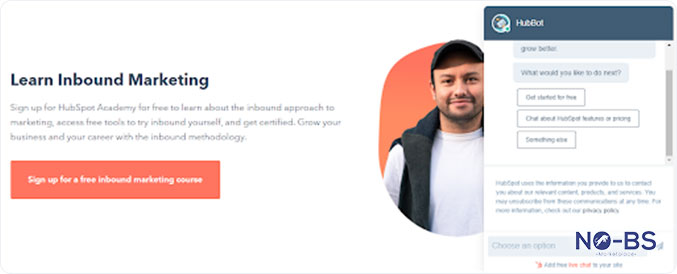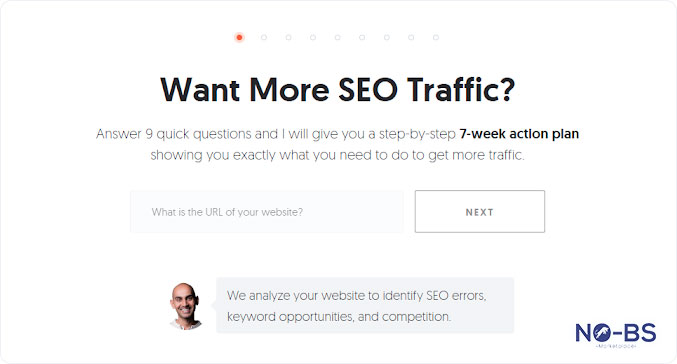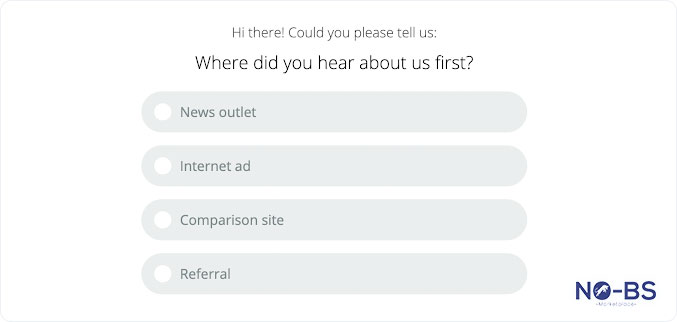Marketing and SEO go hand in hand, but each topic has many ever-changing subtle nuances that require extensive research and expertise to master. This is why you often hear about SEO and marketing separately.
But, in the modern world, if a business wants to thrive it must find a way to bring together SEO and marketing efforts to optimise all aspects of brand reputation, awareness, growth, sales and more. This article will explain what marketing objectives are, what SEO goals are, and how SEO goals align with marketing objectives.
Let’s dive in.

What Are Marketing Objectives?
Promoting new products or services is often the first thing that comes to mind when you think of marketing objectives or brand objectives. This is an important aspect of any business, but just one part of a bigger marketing strategy that aims to promote business growth, increase sales, and build brand authority. Let’s take a closer look.
Business Growth
1. Lead Generation
Identifying new potential customers for a business’s products or services is called lead generation and it’s a big part of how marketing supports the sales team. This process includes collecting customer research, gathering industry insights, and creating content that encourages the audience to give you their email or another form of contact information.
[caption id="attachment_5558" align="aligncenter" width="677"] Image Source: HubSpot[/caption]
Image Source: HubSpot[/caption]
HubSpot, for example, implements lead generation by offering a free course at the end of their inbound marketing article. The article is full of useful information which attracts readers who want to learn more. Offering a free course that only requires users to create an account is a great lead generation strategy for this type of content.
Sites like this also have a chatbot that opens a chat with the reader once they’ve scrolled to the bottom. This is a great way to target new customers who aren’t sure what they want yet. In this example, the chatbot target’s new customers by guiding them to other links within the site that could be helpful.
In the example below, this website opens a pop up for free SEO advice after users finish reading their guide to guest blogging. This is another great lead generation tactic.
[caption id="attachment_5559" align="aligncenter" width="677"] Image Source: Neil Patel[/caption]
Image Source: Neil Patel[/caption]
Other online lead generation options which you could try include:
- Map out the buyer's journey
- Create content that aligns with the stages of the buyer's journey
- Make all CTA’s stand out
- Give away free content
- Use pay-per-click advertising
2. Targeting New Customers
Effective lead generation starts by targeting new customers. Whether a business is just getting started or if a business already has a loyal following, but wants to expand, targeting new customers is key. This can be done through marketing that meets individuals at the awareness stage of the buyer's journey. But before you can do this you need to know who your new target customers are. Here’s some ways you can achieve this goal:
Review Your Existing Customer Base
- Who has already purchased from you?
- What have they purchased most?
- What have they expressed interest in?
Identify Who Your Competitors are Targeting
- Review marketing
- Observe site design
- Check out their social media presence
Analyse the Purpose of Your Product or Service
- Who needs it?
- Who wants it?
- What are the key selling points?
Choose Your Preferred Demographics
- Age range
- Gender
- Location
- Education level
- Occupation
Consider Personality Characteristics
- Lifestyle
- Behaviors
- Attitudes
- Interests
- Hobbies
Reflect on Your New Target Market
- Are there enough people?
- Can they afford it?
- Do they see the need for it?
- Will they really benefit from it?
3. Retaining Existing Customers
Once you’ve targeted and hooked new customers it’s up to marketing to nurture the relationship and retain them. Customer retention happens through consistent and subtle actions which include:
- Sending reminder emails
- Asking for feedback
- Consistent posting on social media
- Uploading engaging and useful blog posts
- Check in with your customers regularly depending on your business model.
These are just some of the ways you can help to retain existing customers.
4. Build Brand Awareness
Brand awareness goes beyond targeting new customers. It’s a process of creating a presence online and offline that people recognise and trust as a reliable source for information, products, or services.
Look at the logos below. I bet you can guess which brands they represent and also their level of quality by simply seeing their logo.


Nike and Mercedes are just two examples of how brand awareness through marketing can impact business success. There are many ways you can build brand awareness and some of these include:
- Share content consistently
- Start a referral program
- Create content for a news source or publication
- Get interviewed on a podcast
- Partner with other businesses
5. Grow Digital Presence
Digital presence is everything in modern marketing. A brand’s digital presence includes content on their website and off of their website.
All content and website elements on every website within a business’s network represent the brand. This includes:
- Colors
- Fonts
- Page Design
- Blogs
- Articles
- Overall Tone
- And much more.
Content off the website also represents the brand. Though you have less control over what another site says about your company, you can guide the narrative. To create opportunities for positive brand representation outside of the company website you can try:
- Guest Posts
- Press Releases
- Sponsored Articles
- Influencer Reviews
- And more.
Growing digital presence is a complex process that will continue to evolve. Give it time and you’ll see a major difference within months.
Increase Sales
1. Promote New Products Or Services
The most obvious way marketing and SEO supports sales is through product or service promotion. We touched on this a little in the beginning. Promotion increases sales because it puts information about new and existing offerings in front of people who want to purchase.
One way to measure the success of marketing efforts is by surveying new customers. The classic ‘how did you hear about us’ question lets customers tell you what guided them to purchase.

There are a few ways you can help promote your products with marketing and SEO and these include:
Inbound Marketing
- Content marketing
- Blogs
- Events
- Search engine optimization (SEO)
- Social media
Paid Advertising
- Guest posting
- Sponsored content
- Partnering with an influencer
Increase Sales, Revenue, & Profit
Effective SEO and marketing can lower customer acquisition costs while also increasing sales, revenue, and profit. Lower cost and increased profit because of consistent marketing efforts, sounds like a win-win. But how do you target your marketing to be more effective? Some things you can try include:
Research
- Define Your Audience: Who are you trying to reach?
- Identify Short & Long-tail Keywords: What is your audience searching for?
- Competitor Analysis: How are your competitors ranking in SERPs?
On-Page Content Optimisation
- Improve page load time
- Make site navigation easy and intuitive
- Refresh blog content to include keywords
Off-Page Content Optimisation
- Create a link-building strategy
- Write guest posts
- Customise how your site appears on SERPs with metadata
Build Brand Authority & Loyalty
1. Building Authority
Authority is one part of how search engines rank a business’s website on SERPs (Search Engine Results Pages). Does the acronym E.A.T sound familiar? If not, here’s a quick overview.
E.A.T stands for Expertise, Authority and Trustworthiness and this is a template for how search engines judge a website. We’ll get into this more when we talk about SEO.
Industry authority is built by creating opportunities for thought leadership. Some of these opportunities include:
Consistently Connecting with Your Audience
- Crafting engaging blogs
- Building your social media presence
- Posting fresh content consistently across all platforms
Connect with Other Audiences
- Guest posting
- Partnering with influencers or bloggers
- Exploring sponsored content
Other ways include consistently showing up through social media posts, press releases, news features and more.
2. Develop Brand Loyalty
There are many different ways marketing creates a sense of loyalty from customers. Sticking to brand guidelines, sharing business values, and using a consistent tone are some ways businesses subtly build loyalty. Customers and potential customers want to relate to and connect with a brand.
Some ways to get your audience to connect with your brand are:
- Solve a problem
- Create high-value offerings
- Offer unparalleled customer services
- Build a community
Apple is a great example of a brand that built a community of followers through consistently offering high-value products that have a user-friendly interface and sleek design.

Why Are Marketing Objectives Important?
A marketing strategy is made up of a series of objectives. Marketing objectives are essentially SMART goals or key milestones that create an outline for success. Specific, Measurable, Attainable, Relevant, and Time-bound are the criteria for a SMART goal.
Marketing objectives align closely with big-picture business goals like increasing profit and improving industry authority. In the previous marketing objective examples, you can see how each objective creates an outline for achieving the broader business goals.
SEO essentially does the same thing.
How Do SEO Goals & Marketing Objectives Align?
SEO stands for Search Engine Optimisation which is the process of improving the quality of content on a website and increasing the amount of traffic a website receives from search engines.
To see how SEO goals align with marketing objectives we’ll explore some key SEO goals within the three major themes we discussed in the marketing objectives section: business growth, increase sales, build brand authority and loyalty.
Business Growth
1. Increase Conversions
Conversion is the process of a page visitor converting to a customer or completing any desired action on a page. Some examples of conversions are page visitors providing their email on a contact form, downloading a PDF, or making a purchase.
SEO increases conversions by examining who is visiting a website and why they’re leaving the page before converting. In some cases, the conversion rate could be low because the website is not attracting the right audience.
In those instances, the SEO strategy would start by narrowing down specific keyword phrases the target audience is searching for and then creating a strategy for updating all content and creating new content to target those phrases.
Before increasing the conversion rate, it’s helpful to target increasing visitor time on a page. This means capturing their attention and keeping them on a page long enough for them to see the value a page offers. Some SEO strategies for increasing visitor time on a page and improving the conversion rate are:
- Increasing page load speed.
- Make your site mobile friendly.
- Resolve any broken links.
- Add engaging visuals like images, gifs, and videos.
- Target long-tail keywords.
- Have an internal linking strategy.
When the conversion rate is increased this means that a higher percentage of organic traffic is willing and ready to buy. This naturally leads to business growth. Another way to increase the amount of quality traffic to a website is through backlinks.
2. Improve Your Backlink Strategy
Building quality backlinks is another way to increase business growth. Backlinks are links on a third party website that link back to your website.
Backlinks can be created intentionally through guest posts, sponsored content, and image insertions.
- Guest Posts: A guest post is written content created by your business that includes a link back to a page within your website. The linked page often has some kind of call to action like downloading a pdf, filling out a contact form, or purchasing something. It can also be a natural article that’s relevant to your link.
- Sponsored Content: There are many different ways to approach sponsored content. Influencer marketing is a great modern example. Other examples include sending samples to bloggers and asking them to write a review on their site, getting your business featured in content about your niche, or sponsoring an article about an important topic or keyword phrase. These are ways to get your brand in front of an untapped audience while also building authority.
- Image Insertion: For businesses that have access to high-quality images, an image insertion is a great approach to building backlinks. For this process, Example Business Inc. will provide images to a publisher to be placed within content like a blog post. The images used within the content are then linked back to the Example Business Inc. website.
Backlinks can also be created naturally through content that is created about your business without any action from your business. If Example Business Inc. owns a beach resort, a natural backlink could come from a local blogger who visited the resort and mentioned their website in a blog post. If Example Business Inc. also runs wellness retreats at the resort, a natural link could come from a regional publication that ranks the top 10 wellness retreats in the area.
It doesn’t matter if a backlink is organic or sponsored. All quality backlinks build authority and increase traffic to a website. Here’s a great article about the best practices of blogger outreach to get you started.
Increase Traffic & Sales
1. Increase Organic Traffic
The biggest goal of SEO is to increase traffic to a website from search engines. This requires understanding the subtle nuances of search engine algorithms which are always evolving to improve the search experience. Right now, E.A.T is how we create the most optimised content. As we explained earlier, E.A.T stands for expertise, authority, and trustworthiness.
Building backlinks is one way to improve E.A.T for a website. Targeting specific keyword phrases and building a pillar and cluster model for creating content is another great way to increase web traffic organically.
Increased traffic is just the beginning. Once the traffic has landed on your website, you want to keep it there as long as possible.
2. Decrease Bounce Rate
Bounce rate measures the amount of time a visitor spends on a page before leaving the website. This takes us back to the examples we listed earlier that increase visitor time on a page. Let’s expand on a few.
- Increasing page load speed decreases bounce rate because it appeals to the searcher’s short attention span. When an individual is looking for something and they find your page as a resource, they want to find what they’re looking for quickly. If a page loads slowly or doesn’t load at all, this discourages the individual and sends them back to the SERPs. Some ways to improve page load time are optimising images, minimising redirects, and working with the web development team to optimise website code.
- Resolving any broken links is important for bounce rate because broken links greatly diminish the user experience. Common broken link errors are 301 Moved Permanently, 404 Not Found, and 401 Unauthorised. You can identify broken links with our free broken link checker. Once you’ve identified which links are broken you need to identify the root cause of the error. Sometimes links are spelled incorrectly, or they need to be redirected to a new page, and there are many other potential root causes. The root cause will determine how you resolve the error.
- Long-tail keywords are a great way to tap into an audience that’s already searching for content your business has created. Deep audience and keyword research will most likely yield a wide variety of topics within your niche that you can use for inspiration. But, it’s up to the SEO and digital marketing teams to decide which keyword phrases they want to target and rank high for on SERPs.
- Having an internal linking strategy is a great way to decrease the bounce rate and drive traffic from one page on your website to another page on your website. This process of internal linking passes link value from one page to another. Link value, or ‘link juice,’ measures the amount of quality traffic that is passed from one web page to another. You can measure link value for all links externally, like backlinks, and internally too. Broken links are the quickest way to lose link value.The pillar and cluster model is an internal linking strategy that we highly recommend because it organises ideas based on targeted keyword phrases. Learn more about internal linking in our Simple Guide to Internal Linking that includes 8 valuable tips for SEO success
- Increasing e-commerce sales through SEO is done by engaging with individuals through the entire digital customer journey. Improving E.A.T, targeting specific keywords, and building backlinks are ways to reach individuals at the beginning of the buyer’s journey. Creating blogs and other consistent content nurtures the relationship and builds a sense of trust so that when they land on a sales page they are more likely to purchase.
Build Brand Authority & Loyalty
Strengthening domain authority is the biggest way SEO contributes to building brand authority and loyalty. Building backlinks and creating blogs or other kinds of internal content that display thought leadership are some ways to strengthen domain authority. All strategies will take time to see results. Domain authority increases slowly as search engine bots scan and index a website.
One way to control how search engine bots see your website is through a robots.txt file or meta robots tags. Check out The Ultimate Robots.txt Guide for Beginners to learn more about the robots.txt file and how to use it.
Where Marketing Objectives & SEO Goals Coincide
So you see how marketing and SEO both take clear steps toward business growth, increasing sales and building brand authority and loyalty. Marketing has a more broad and multiplatform approach to increasing brand visibility. SEO has a focus on optimising a brand’s digital presence. And both are essential for business success in the modern world. How is your marketing and SEO efforts doing?
